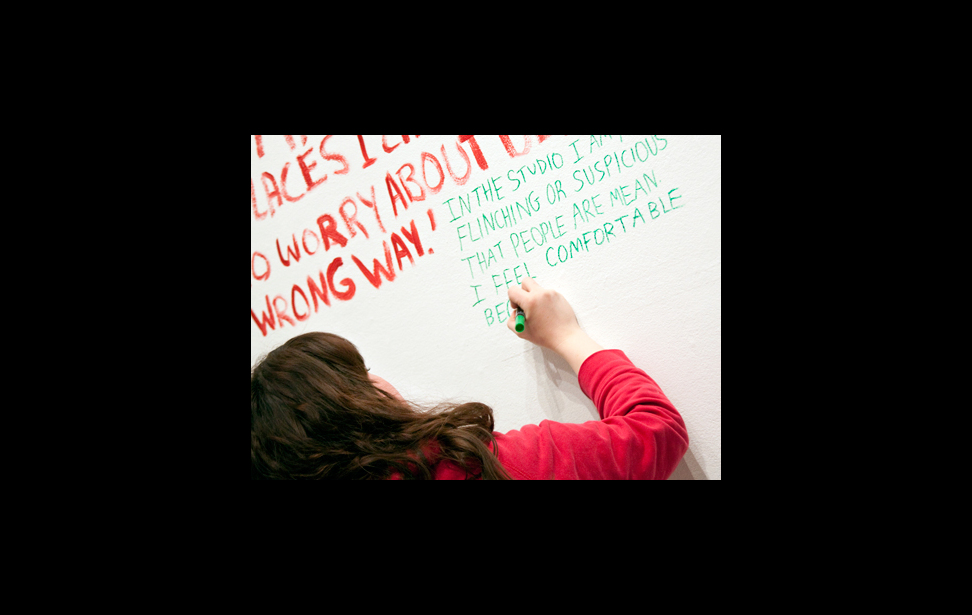New Urban Arts: Taking Control of Education
PROVIDENCE, RI: New Urban Arts is a community arts studio for high school students and artists whose mission is to empower young people to develop a sustaining creative practice throughout their lives. Tamara Kaplan, Operations Manager, became involved with the program with her graduate research in museum education. thalo sat down with Tamara to discuss New Urban Arts' programming and philosophy.
thalo: What is your background?
Tamara Kaplan: I grew up in a small town in northern Pennsylvania, where the arts wasn't considered that important. When I got my masters in education I did a lot of work with museums and equity in museum settings, using contemporary artists as a way to engage new audiences—especially audiences with a varying ethnic background. At New Urban Arts I've been going back and forth between Program Director and Operations Manager. I'm the kind of person who enjoys the best of both worlds: I want to work on clay in my studio, I want to make sure my twins are doing their thing, and I want to build this idea and this movement of how New Urban Arts structures teaching and learning (as seen in photos 1 - 3).
th: What do you see as the mission of New Urban Arts?
TK: It’s a nationally recognized art studio for high school kids and artists in Providence. We have an arts mentoring program called our Youth Mentorship in the Arts Program. We hire around twenty artist mentors who are a mix of college students, professional artists, emerging artists, and people interested in creativity and education, and pair them with high school students. The cool part about it for us is that they are interviewed and hired by the students themselves. We think that if the students are working with a particular person then they should also be hiring them.
When students work with a mentor, it’s about exploring what they’re interested in, so if someone is interested in fashion or photography they will work with a mentor that has that specialty. It’s not a class, per se, it’s about what the student is interested in learning. It’s a conversation. Students also hire two study buddies who help with their academic schoolwork. The program starts in October and finishes in May. There are two student exhibitions throughout the year. In February we celebrate midyear making and at the end of the year there is a big art party.
th: What is unique about New Urban Arts?
TK: It's about building relationships, and specifically about building relationships between young people and adults that are nurturing and not so hierarchical. It’s a more collaborative, “let’s work together” kind of attitude.
th: It must be interesting for students to have the opportunity to hire mentors and take control of their own education, as it's so different from how traditional high school is structured. How does that change things for them?
TK: It’s really interesting to watch that dynamic because that’s a huge difference in the students from the beginning of the year to the end. There's a kind of understanding and push back because they’re not used to making those kinds of decisions, or being asked to make those decisions. High school students working in larger cities and people of color are so often seen as problems, not as solutions to the problem. It’s shifting that paradigm.
Photos 1 - 3: Courtesy New Urban Arts










